
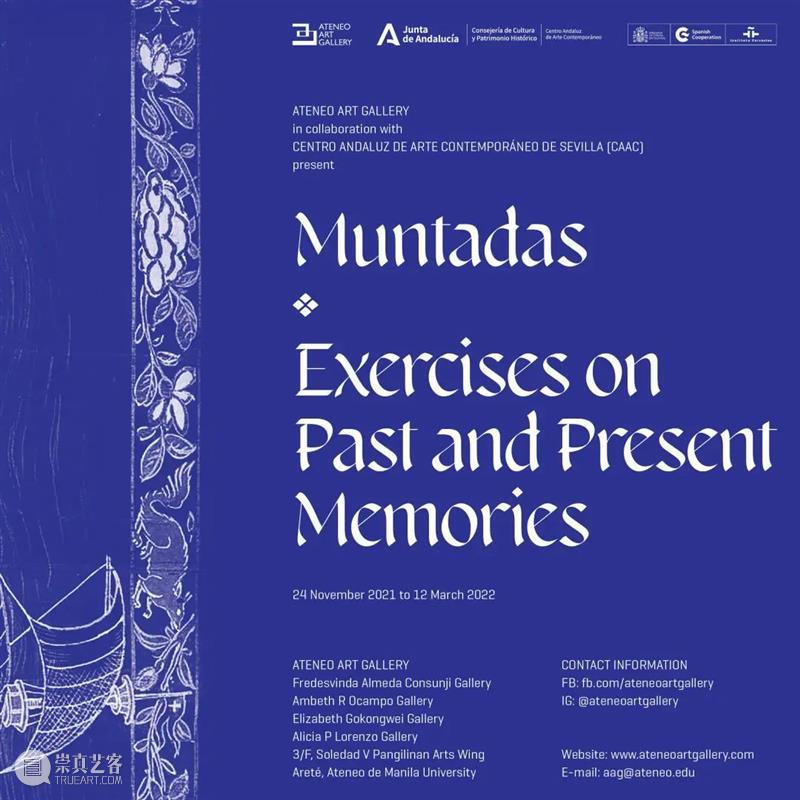
蒙塔达斯:过去与现在的记忆练习
Muntadas: Exercises on Past and Present Memories
安东尼·蒙塔达斯个展
Antoni Muntadas's solo exhibition
展期 Duration: 2021.11.24 - 2022.3.12
地点 Venue: 雅典耀美术馆,菲律宾
Ateneo Art Gallery, Philippines
请点击“阅读原文”进入线上展厅
Please click 'Read more' for the virtual tour of the exhibit.
记忆反复出现在当代艺术的创作当中,它既是“一个历史问题,也是一个艺术和理论问题”。它可以是个人的,也可以是集体的和文化的。艺术作为记忆的载体可以呈现不同语境和地域的历史,艺术家借助民族志学者的研究策略,通过记忆来重构历史,或通过实地考察,收集跨学科数据库的图像和信息等零散的叙述,来回溯和呈现历史的记忆。
Memory has been a point of juncture often used in contemporary art, both as “a historical concern and as an artistic and theoretical problem”. It can be individual or collective and cultural. As repositories or places of memory, works of art can represent or suggest histories that belong to different contexts and spaces. In constructing histories from memory, artists employ the strategies of an ethnographer. Fieldwork becomes a method and an attitude as artists collect, recollect, and present — “through fractured narrations — images and information of a world perceived as a transdisciplinary database.”
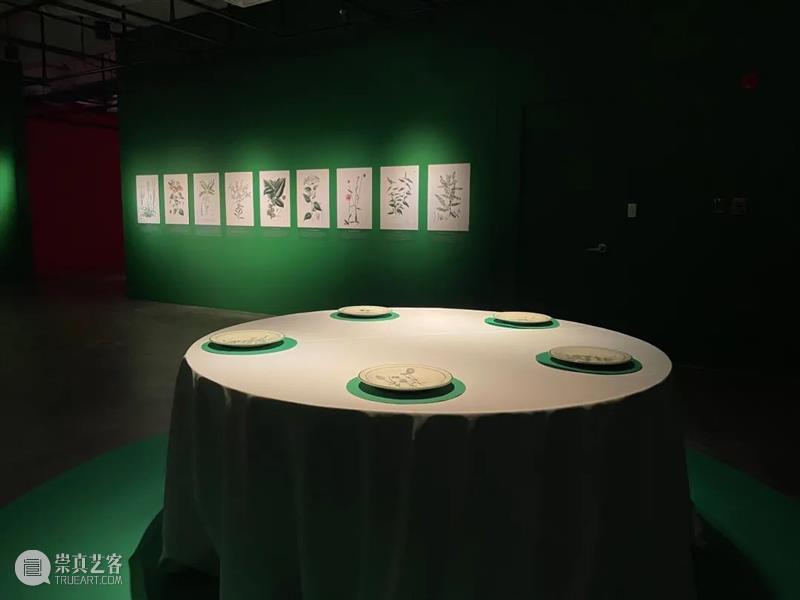
今天,许多艺术家都充当着历史记忆的代理人,其中包括安东尼·蒙塔达斯 (Antoni Muntadas)。他们通过非连续的叙事方法来编织记忆,并试图将“社会记忆、私人记忆、政治记忆和艺术记忆”联系起来。蒙塔达斯认为翻译(Translation)是他艺术实践的一个重要方面。这里的“翻译”是指在不同文化和地域之间建立桥梁的能力。他针对被边缘化或不可见的文化和社会现实,探索身份、文化、语言、大众媒体和信息技术等问题之间的相互关系。蒙塔达斯在不同国家间建立合作,针对特定地点,将经过历史、社会、人种学和文化等工具研究的产品转换为基于媒介的装置作品。
Many artists today act as historical agents of memory, among them Antoni Muntadas. They seek the production of remembrance using a discontinuous way of storytelling. They seek to connect “social memory and intimate memory, political memory and artistic memory.” Muntadas considers the task of translation as a significant aspect of his art practice. Translation here is taken as the ability to create bridges between cultures and spaces of transversal understanding. His investigations are drawn towards cultural and social conditions that are marginalized or invisible; his explorations underscore the interrelations between issues of identity, culture, language, mass media, and information technologies, among others. Muntadas has created and collaborated on projects in different countries that are site specific, products of extensive research (historical, social, ethnographic, and cultural) which are then transposed into media-based installation works.
展览“过去和现在的记忆练习”起始于艺术家对菲律宾和西班牙共同的殖民记忆和历史的研究。幸运的是,该项目正值纪念环球航行五百周年之际。但具有讽刺意味的是,项目是在疫情肆虐、旅行受限的背景下构思并落地完成的。
The concept for Muntadas: Exercises on Past and Present Memories began with the artist referencing the shared colonial memories and histories of the Philippines and Spain. Fortuitously, the project coincides with the historical landmark Commemorating the quincentennial of the circumnavigation of the globe. Ironically, the project developed during the global pandemic which restricted physical travels.
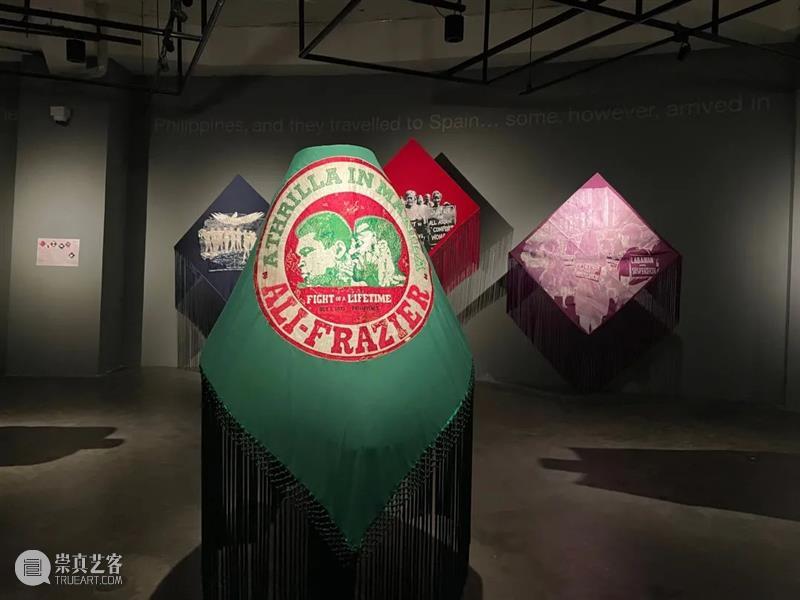
展览现场 Exhibition View
2019年的一次短暂访问是蒙塔达斯第一次与人满为患的马尼拉相遇,他在西班牙王城逗留了一天,回忆起了儿时听到的一首关于马尼拉披巾的民歌,这或许就是这次展览的触发点。
A brief visit in 2019 was Muntadas’ first encounter with the overcrowded metropolis of Metro Manila which included a day-long exploration around the walled city of Intramuros. A folk song from childhood about a mantón de Manila was a memory he then recalled, which may have been a trigger that defined trajectories for this project.
马尼拉帆船的商业线路为该项目提供了初始框架。特定的现成物在蒙塔达斯的安排下,成为菲律宾社会历史、政治和文化叙事的隐喻。这也与他早期的作品一致,他通过跨国性和全球性主题不断指向“移动”的概念——这一切都始于 16 世纪的大帆船贸易。环球航行连接了东方和西方,新的土地被欧洲经济所征服。大帆船贸易扩大了来自两个半球的奢侈品的分销。此外,这些贸易路线不仅输送了人力,还传递了货物,传播了新的发明、宗教信仰、语言和社会习俗。
The Manila Galleon commercial circuit provides the initial framework for the project, as Muntadas designates specific objects as metaphors for historical, political and cultural narratives relevant to Philippine society. This also runs consistent with his earlier works where the idea of movement is a recurring concept through the themes of transnationality and globality — ideas which began with the galleon trade in the 16th century. The circumnavigation of the globe essentially connected the East and the West. New lands were subjugated into European economies. The galleon trade expanded the distribution of luxury goods from both hemispheres. Moreover, these trade routes moved people and transmitted not only goods but also new inventions, religious beliefs, languages, and social customs.
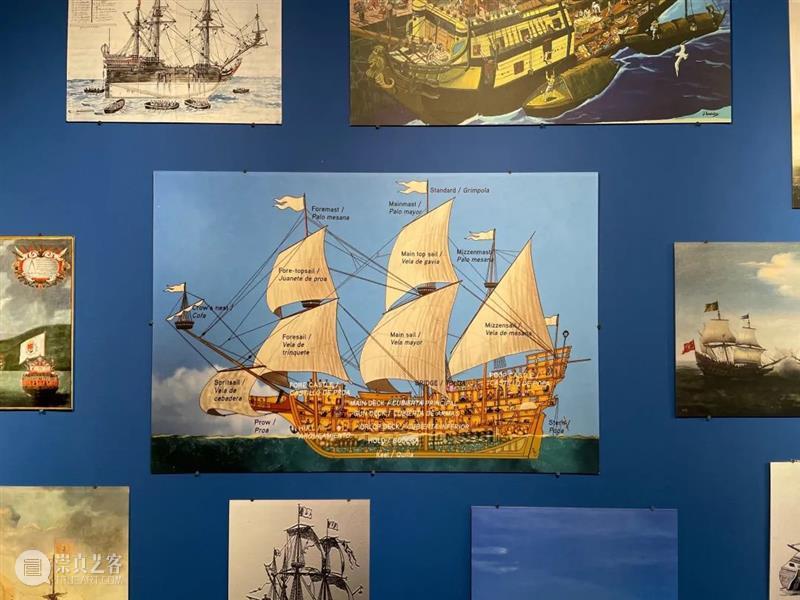
马尼拉阿卡普尔科帆船贸易墙
Manila Acapulco Galleon Trade Wall
蒙塔达斯借助三种类别的商品诠释了菲律宾的过去与现在:来自中国的马尼拉披肩、奖章和硬币以及来自塞维利亚的陶瓷。艺术家更喜欢关注这些物品的潜在叙事——其内容和生产方式,而非物品在时间长河中的演变过程。
Muntadas identifies three traded objects as his subjective interpretations of connecting with the Philippines of the past and the present - the mantón or the Manila Shawl from China, medallions and coins, and ceramics from Seville. The artist preferred to focus on the potential narrative of these objects — its content and modes of production— instead of the diachronic or temporal journey.
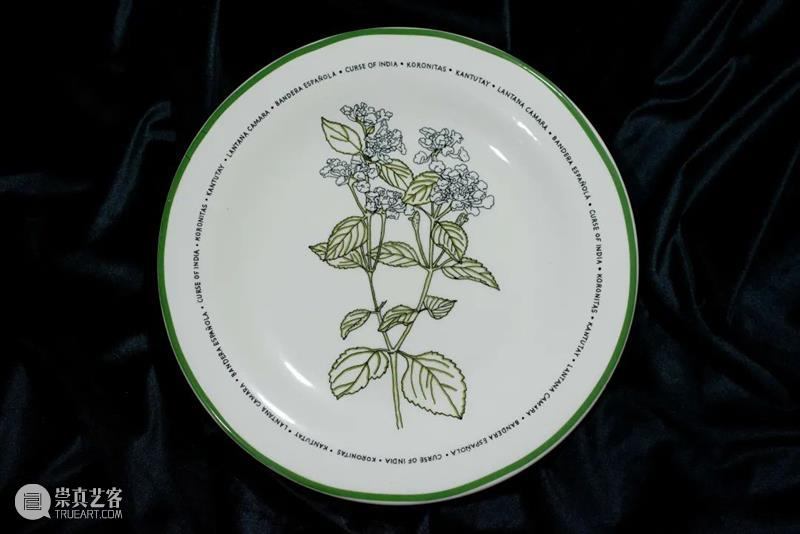
《入侵物种》Malas Hierbas
《入侵物种》(Malas Hierbas)是一套在塞维利亚制造的餐盘,其上绘有经由美洲引入菲律宾的九种入侵物种,暗指殖民主义对当地人口和生态的影响。《给不具名移民工人的便携式纪念碑》(Portable Monuments to Anonymous Emigrant Workers)向为西班牙经济做出贡献的海外菲律宾人致敬。一套纪念币展示了社区评选出的十位杰出人士的事迹和成就。蒙塔达斯将纪念币或奖章视为纪念碑,是来自于社区的认可。它们规格适中,也便于携带,体现了对移民主体的流动性的尊重。奖章是用银铸造的,暗示了这种贵金属在殖民时期的流通,以及移民的经济价值。
Malas Hierbas includes as set of plates manufactured in Sevilla and gives focus on nine invasive species introduced to the Philippines via the Americas, alluding to the impact of colonialism particularly to indigenous populations and ecology. Portable Monuments to Anonymous Emigrant Workers pay tribute to the many Filipinos living overseas who have contributed to our country’s economy. A set of commemorative coins present the personal stories and achievements of ten individuals selected by their respective communities. Muntadas regards the coins or medallions as monuments, recognition bestowed by their own community, making the invisible visible. They are modest in scale and also portable, to honor the mobility of the migrant subjects. The medallions are cast in silver, alluding to the circulation of this precious metal during the colonial period and, in the present, the economic value of immigrants in the form of remittances.
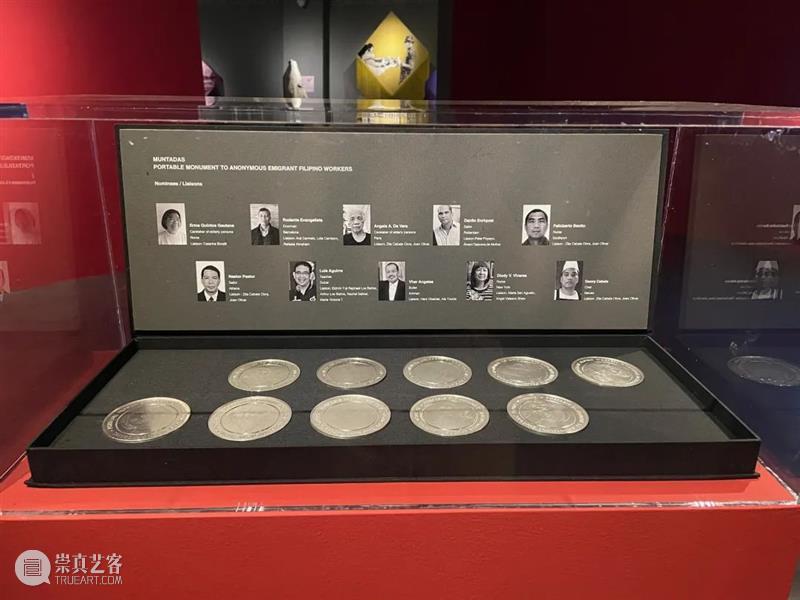
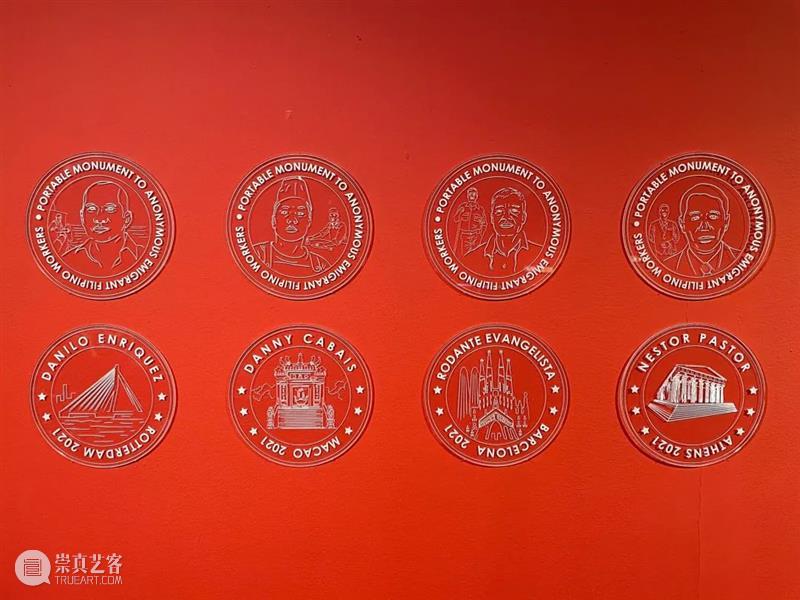
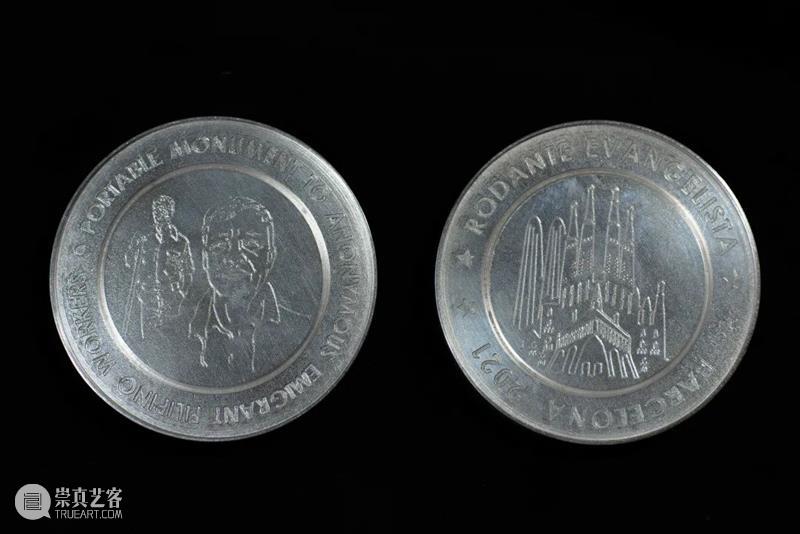

《给不具名移民工人的便携式纪念碑》
Portable Monuments to Anonymous Emigrant Workers
Mantónes包含15条带有刺绣图案的披肩,这些图案标志着菲律宾的历史、流行文化和时事的不同节点,是艺术家和策展团队经过讨论研究后选择的图像。该系列作品重新定义了使用机械化和数字化技术以及本地和进口材料相结合的生产模式。每条披肩上的图案都是数码印刷的,在拉古纳的伦班(马尼拉南部)当地刺绣,并且每条披肩都饰有印度产的流苏。
Mantónes features fifteen shawls with embroidered images that mark different points in Philippine history, popular culture, and current events. Images were selected after a process of research and consultation between the artist and the curatorial team. This set specifically redefines the mode of production using mechanized and digital technologies and local and imported materials. Designs on each shawl were digitally printed; embroidered locally, in Lumban, Laguna (south of Manila); and each shawl is finished with fringes produced in India.
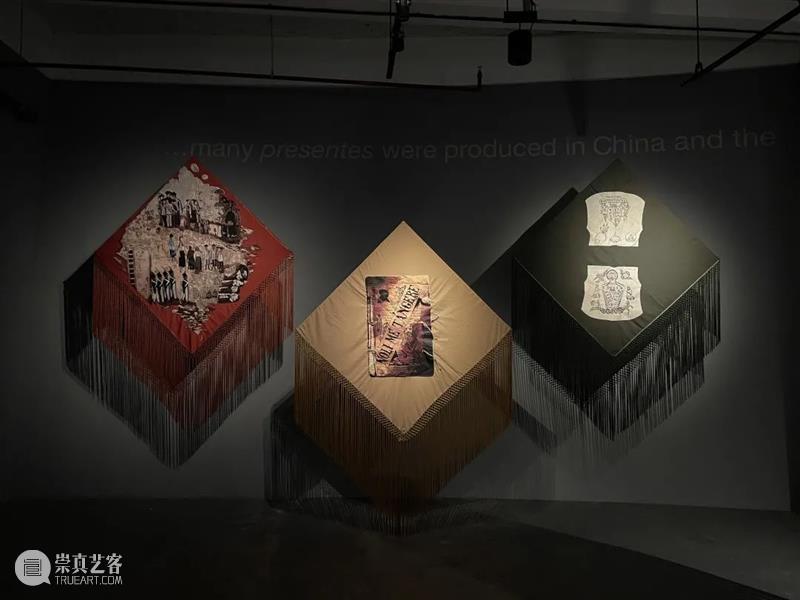
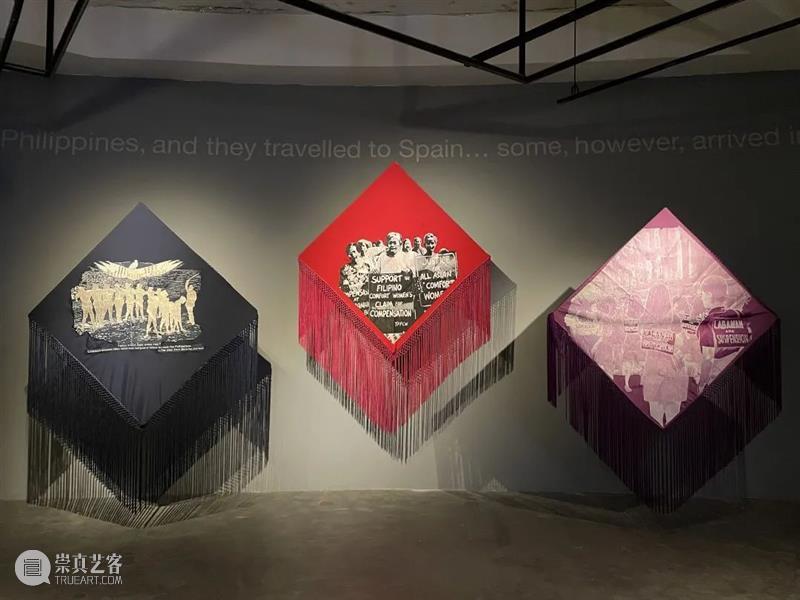

《披肩》Mantónes
如果没有手扇作为配饰,女人的装束就不会完整。在15世纪,欧洲旅行者将扇子(最初来自韩国)从中国带回来。西班牙手扇最早制作于 17 世纪,今天,这些配件仍然是必需品,尤其是在像菲律宾这样的热带国家。
A woman’s attire would not be complete without the abanico as an accessory. European travelers brought fans (originally from Korea) back from their travels to China in the 15th century. Spanish hand fans were first crafted in the 17th century. Today, these accessories remain a necessity especially in a tropical country like the Philippines.
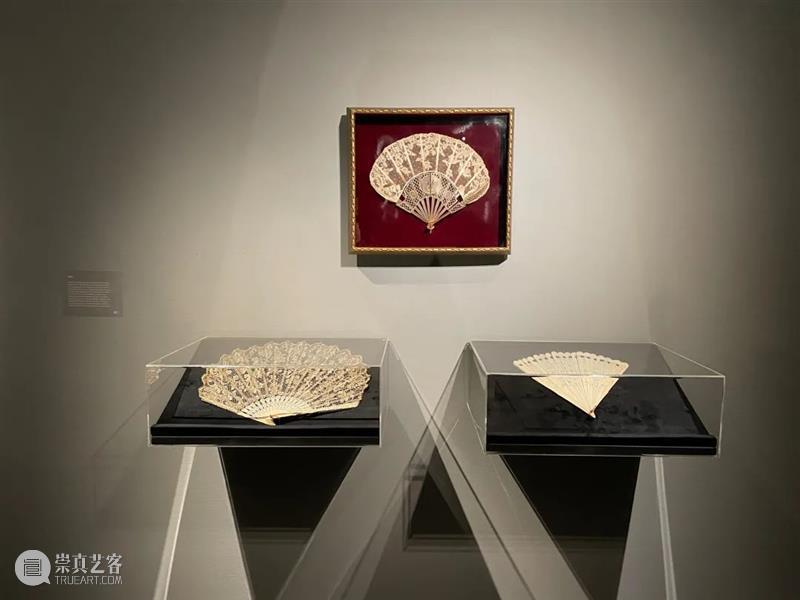
《手扇》 Fan
关于安东尼·蒙塔达斯
About Antoni Muntadas

请上下滑动阅读 Please roll to read more
相关阅读 Read more:
艺术家 | 安东尼·蒙塔达斯在Getty Museum的线上访谈
艺术家 | 安东尼·蒙塔达斯参加上海塞万提斯图书馆展览项目“塞外”



已展示全部
更多功能等你开启...





 分享
分享